
Sadar Bazaar: Agra's Bustling Shopping Haven
Explore the vibrant Sadar Bazaar in Agra, where traditional crafts, delicious street food, and the lively spirit of India come together in a bustling market atmosphere.
Nestled in the heart of Agra, Sadar Bazaar is a vibrant and bustling market that offers a unique glimpse into the daily lives of locals and the rich culture of India. This lively neighborhood is a must-visit for tourists seeking an authentic shopping experience, where traditional crafts and modern goods coexist harmoniously. As you stroll through the narrow lanes of Sadar Bazaar, you'll be greeted by the colorful displays of textiles, handicrafts, and souvenirs. The market is renowned for its leather goods, including finely crafted shoes and bags, which make perfect gifts and mementos. The enticing aroma of street food wafts through the air, with vendors serving up delicious local delicacies such as chaat, samosas, and jalebis. It's a sensory feast that invites you to indulge in the flavors of Agra. Beyond shopping and food, Sadar Bazaar offers a chance to engage with the warm and friendly locals. The market is a social hub where you can observe traditional Indian life in full swing. Whether you're bargaining for a beautiful piece of jewelry or simply soaking in the lively atmosphere, Sadar Bazaar is a place that leaves a lasting impression on all who visit.
Local tips in Sadar Bazaar
- Visit in the late afternoon or early evening for the best shopping experience and to enjoy the vibrant atmosphere.
- Carry small denominations of cash as many vendors do not accept cards.
- Don't hesitate to bargain; it's a common practice and part of the shopping culture.
- Try the local street food but ensure it's from a vendor with good hygiene practices.
- Keep an eye on your belongings, as crowded markets can attract pickpockets.
Sadar Bazaar: Agra's Bustling Shopping Haven
Nestled in the heart of Agra, Sadar Bazaar is a vibrant and bustling market that offers a unique glimpse into the daily lives of locals and the rich culture of India. This lively neighborhood is a must-visit for tourists seeking an authentic shopping experience, where traditional crafts and modern goods coexist harmoniously. As you stroll through the narrow lanes of Sadar Bazaar, you'll be greeted by the colorful displays of textiles, handicrafts, and souvenirs. The market is renowned for its leather goods, including finely crafted shoes and bags, which make perfect gifts and mementos. The enticing aroma of street food wafts through the air, with vendors serving up delicious local delicacies such as chaat, samosas, and jalebis. It's a sensory feast that invites you to indulge in the flavors of Agra. Beyond shopping and food, Sadar Bazaar offers a chance to engage with the warm and friendly locals. The market is a social hub where you can observe traditional Indian life in full swing. Whether you're bargaining for a beautiful piece of jewelry or simply soaking in the lively atmosphere, Sadar Bazaar is a place that leaves a lasting impression on all who visit.
Iconic landmarks you can’t miss
Taj Mahal
Discover the timeless beauty of the Taj Mahal, an architectural wonder and a symbol of love nestled in the heart of Agra, India.

Agra Fort
Discover the glory of Agra Fort, a UNESCO World Heritage Site steeped in history and architectural beauty, overlooking the iconic Taj Mahal.

Itmad-ud-Daula
Discover the exquisite beauty of Itmad-ud-Daula, Agra's 'Baby Taj', a historical gem showcasing remarkable Mughal architecture and serene gardens.

I LOVE AGRA photo point
Experience the vibrant spirit of Agra at the I LOVE AGRA photo point, a perfect spot for memorable snapshots and cultural immersion.

Anguri Bagh
Discover the serene elegance of Anguri Bagh, a historic Mughal garden in Agra Fort that offers a tranquil escape into India's imperial past.

Jahangir Palace
Explore the stunning Jahangir Palace in Agra, a masterpiece of Mughal architecture with rich history and breathtaking views.
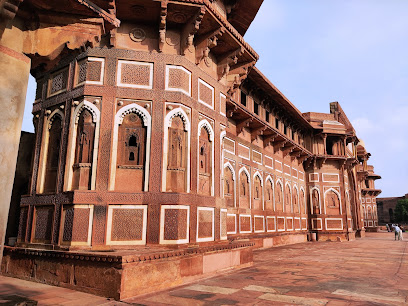
The Shish Mahal (The Glass Palace)
Discover the enchanting beauty of The Shish Mahal in Agra, where Mughal architecture and history come to life in a breathtaking palace of glass and artistry.
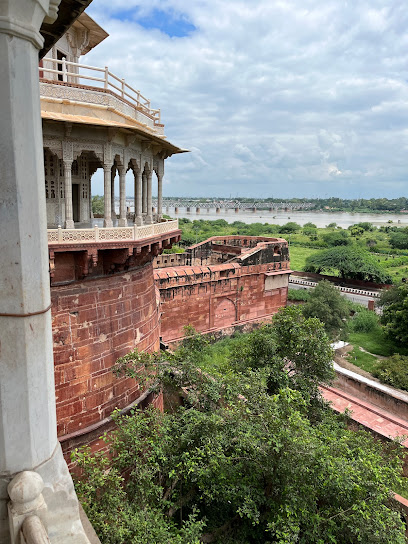
Diwan-I-Am
Explore the grandeur of Diwan-I-Am, Agra's exquisite Audience Hall, and experience a pivotal piece of Mughal history.

Sadar Bazar
Explore Sadar Bazar, Agra's vibrant marketplace, where local culture, delicious street food, and unique handicrafts come together in a sensory delight.

Chhatrapati Shivaji Maharaj Memorial
Explore the Chhatrapati Shivaji Maharaj Memorial in Agra - a stunning tribute to India's valorous king amidst lush gardens and historical significance.

Subhash Emporium
Explore the rich heritage of Indian handicrafts at Subhash Emporium, Agra's premier destination for unique artisanal treasures.

St. George's Cathedral (CNI)
Discover the architectural beauty and spiritual tranquility of St. George's Cathedral, a must-visit tourist attraction in Agra.

Tomb Of John Russell Colvin
Explore the serene beauty of the Tomb of John Russell Colvin in Agra – a hidden treasure showcasing Indo-Saracenic architecture and rich colonial history.

Shahi Burj
Experience the breathtaking views of the Taj Mahal from the historic Shahi Burj, a magnificent example of Mughal architecture in Agra.
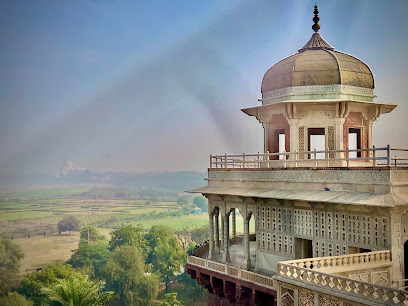
Agra art gallery
Discover the artistic heart of Agra at the Agra Art Gallery, showcasing local handicrafts and vibrant contemporary art in a cultural haven.

Unmissable attractions to see
St. George's Cathedral (CNI)
Explore the timeless beauty of St. George's Cathedral in Agra, a stunning Gothic masterpiece offering tranquility and rich cultural heritage.

Shahi Burj
Discover the regal elegance of Shahi Burj, a stunning Mughal architectural marvel within Agra Fort, steeped in history and breathtaking views.

Essential places to dine
Mama Chicken Mama Franky house
Savor the best of Agra's culinary delights at Mama Chicken Mama Franky - from barbecue to Mughlai specialties!

Lakshmi Vilas
Discover the rich flavors of South India at Lakshmi Vilas in Agra – a must-visit for breakfast lovers and vegetarian cuisine enthusiasts.

Om Restaurant
Experience authentic Indian vegetarian cuisine at Om Restaurant in Agra – where flavor meets family-friendly dining.

Om Bhojnalay
Experience authentic North Indian vegetarian cuisine at Om Bhojnalay in Agra - where flavor meets tradition.

Shan E Hind
Discover the rich flavors of North Indian cuisine at Shan E Hind in Agra – a culinary gem known for its mouthwatering chicken dishes.
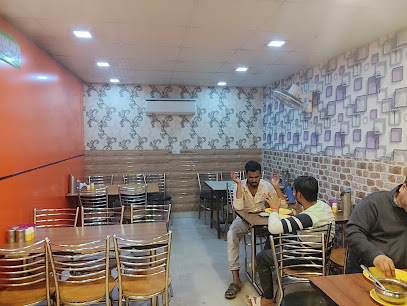
The Park Restaurant
Experience exquisite Indian cuisine in Agra at The Park Restaurant – where every dish tells a story.

New Garden Restaurant
Experience the rich flavors of North and South Indian cuisine at New Garden Restaurant in Agra - where every meal is a celebration.
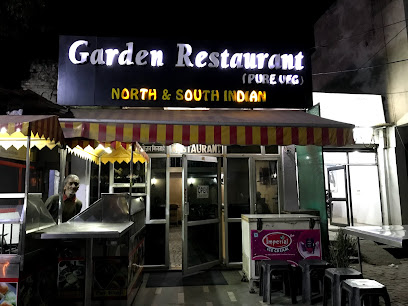
Madhuvan Cafe & Restaurant
Experience authentic North Indian cuisine and delightful fast food at Madhuvan Cafe & Restaurant in Agra.
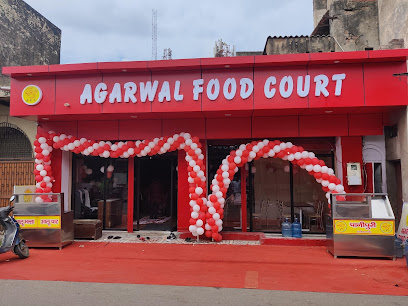
Zorba The Buddha
Discover authentic North Indian cuisine at Zorba The Buddha, where tradition meets taste in the heart of Agra's vibrant Sadar Bazar.

MUNCHIES
Experience the vibrant flavors of Agra at Munchies - your go-to spot for delicious street food in Sadar Bazar.

Markets, malls and hidden boutiques
Bachoomal Sons Agra
Discover the elegance of Indian fashion at Bachoomal Sons Agra, offering bridal wear, children's clothing, and a wide selection of stylish apparel.
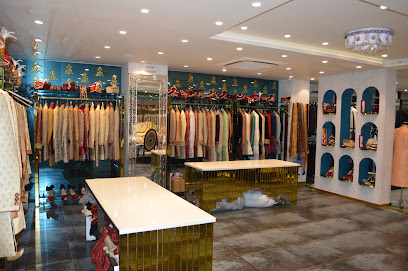
Levi's Exclusive Store
Explore the Levi's Exclusive Store in Agra, where classic denim meets contemporary style in a vibrant shopping atmosphere.

HABOVA STORES
Discover a unique shopping experience at HABOVA STORES in Agra, where a diverse selection of gifts and essentials await.

Archies
Discover unique gifts and souvenirs at Archies in Agra, where every item reflects the rich Indian culture.

SHRI YAMUNESH VASTRALAYA
Explore unique clothing styles at Shri Yamunesh Vastralaya, Agra's premier destination for traditional and contemporary garments.

Hallmark Sadar Agra
Explore Hallmark Sadar Agra for unique gifts, clothing accessories, and toys, perfect for capturing memories of your visit to this historic city.

Harison Toys Shop
Discover Harison Toys Shop in Agra, a whimsical gift shop filled with toys and treasures for all ages, perfect for creating lasting memories.

Unique Collection Ladies Western Outfits Casual Wear :)
Explore the vibrant fashion scene at Unique Collection Ladies Western Outfits, your go-to casual clothing store in Agra for trendy and comfortable attire.

New Mughal Boutique
Discover exquisite handicrafts and home goods at New Mughal Boutique in Agra, where artistry meets culture.

Sadar bazar near gurudwara
Explore the bustling Sadar Bazar in Agra, where vibrant local culture meets unique shopping experiences filled with traditional crafts and delectable street food.

Essential bars & hidden hideouts
The Palm Burj - Best Rooftop | Best Lounge | Best Club | Best Pub | Best Restaurant in Agra
Discover vibrant nightlife at The Palm Burj, Agra's premier rooftop lounge offering stunning views, exquisite cuisine, and a lively atmosphere.

Sheetal Bar & A/C Restaurant
Discover the fusion of flavors and refreshing drinks at Sheetal Bar & A/C Restaurant in Agra, where every visit is a culinary delight.

New Agra Caterers Bar & Restaurant
Experience the culinary delights of Agra at New Agra Caterers Bar & Restaurant, where traditional flavors meet a modern dining atmosphere.

Dj Party Night & The Ramp Cafe
Dive into the vibrant nightlife of Agra at Dj Party Night & The Ramp Cafe, where delicious food meets electrifying entertainment.

Xhale Cafe & Sheesha Lounge
Discover relaxation at Xhale Cafe & Sheesha Lounge in Agra, where delicious flavors meet a cozy atmosphere for the perfect break.

Gaylord Restaurant
Discover a fusion of traditional Indian flavors and modern dining at Gaylord Restaurant in Agra, a perfect stop for food lovers.

Spiced Brew
Explore the charming Spiced Brew in Agra, where aromatic beverages and delicious dishes meet a cozy atmosphere for the perfect respite.

509 ABW OFFRS MESS
Discover a lively bar in Agra, 509 ABW OFFRS MESS, perfect for unwinding after a day of exploring the city's iconic attractions.
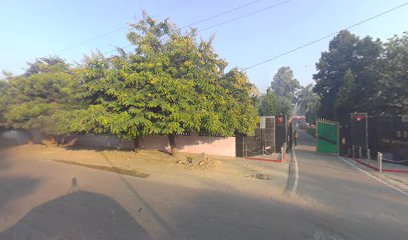
Tourist bar and restaurant
Experience the vibrant nightlife of Agra at this local bar and restaurant, offering a delightful mix of flavors and a welcoming atmosphere.

JAIWAL BAR
Jaiwal Bar in Agra: A lively hub for nightlife, blending local charm with a vibrant atmosphere for an unforgettable experience.
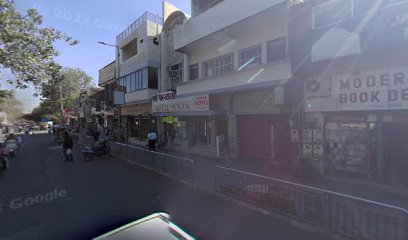
Local Phrases
-
- Helloनमस्ते
[namaste] - Goodbyeअलविदा
[alvida] - Yesहां
[haan] - Noनहीं
[nahin] - Please/You're welcomeकृपया/स्वागत है
[krupaya/swagat hai] - Thank youधन्यवाद
[dhanyavad] - Excuse me/Sorryक्षमा कीजिए/माफ़ कीजिए
[kshama keejiye/maaf keejiye] - How are you?आप कैसे हैं?
[aap kaise hain?] - Fine. And you?ठीक हूँ। आप?
[theek hoon. aap?] - Do you speak English?क्या आप अंग्रेज़ी बोलते हैं?
[kya aap angrezi bolte hain?] - I don't understandमुझे समझ में नहीं आया
[mujhe samajh mein nahin aaya]
- Helloनमस्ते
-
- I'd like to see the menu, pleaseकृपया मेनू देखना चाहूँ
[krupaya menu dekhna chaahun] - I don't eat meatमैं मांस नहीं खाता
[main maans nahin khata] - Cheers!चियर्स!
[cheers!] - I would like to pay, pleaseकृपया मुझे भुगतान करने दे
[krupaya mujhe bhugtan karne de]
- I'd like to see the menu, pleaseकृपया मेनू देखना चाहूँ
-
- Help!मदद!
[madad!] - Go away!चले जाओ!
[chale jao!] - Call the Police!पुलिस को कॉल करो!
[police ko call karo!] - Call a doctor!डॉक्टर को कॉल करो!
[doctor ko call karo!] - I'm lostमैं खो गया/गई हूँ
[main kho gaya/gayi hoon] - I'm illमुझे बीमारी है
[mujhe bimari hai]
- Help!मदद!
-
- I'd like to buy...मैं खरीदना चाहूँगा/गी
[main khareedna chaahunga/chaahungi] - I'm just lookingमैं सिर्फ देख रहा/रही हूँ
[main sirf dekh raha/rahi hoon] - How much is it?यह कितने का है?
[yah kitne ka hai?] - That's too expensiveयह बहुत महंगा है
[yah bahut mahnga hai] - Can you lower the price?क्या आप कीमत कम कर सकते हैं?
[kya aap keemat kam kar sakte hain?]
- I'd like to buy...मैं खरीदना चाहूँगा/गी
-
- What time is it?अब कितने बजे हैं?
[ab kitne baje hain?] - It's one o'clockयह एक बजे का है
[yah ek baje ka hai] - Half past (10)दस बजे के बाद आधा
[das baje ke baad aadha] - Morningसुबह
[subah] - Afternoonदोपहर
[dopahar] - Eveningशाम
[shaam] - Yesterdayकल
[kal] - Todayआज
[aaj] - Tomorrowकल
[kal] - 1एक
[ek] - 2दो
[do] - 3तीन
[teen] - 4चार
[chaar] - 5पांच
[paanch] - 6छह
[chhah] - 7सात
[saat] - 8आठ
[aath] - 9नौ
[nau] - 10दस
[das]
- What time is it?अब कितने बजे हैं?
-
- Where's a/the...?कहाँ है...?
[kahaan hai...?] - What's the address?पता क्या है?
[pata kya hai?] - Can you show me (on the map)?क्या आप मुझे दिखा सकते हैं?
[kya aap mujhe dikha sakte hain?] - When's the next (bus)?अगली बस कब है?
[agli bas kab hai?] - A ticket (to ....)एक टिकट (को ...)
[ek ticket (ko ...)]
- Where's a/the...?कहाँ है...?
History of Sadar Bazaar
-
Sadar Bazaar, one of Agra's oldest and most vibrant markets, has been a trading hub since the Mughal era. Established in the 16th century, it served as a key commercial center where merchants traded goods ranging from textiles to spices. The bazaar's strategic location near important monuments like the Taj Mahal facilitated its growth, making it a focal point for both locals and tourists.
-
Throughout its history, Sadar Bazaar has been a melting pot of cultures, reflecting the diverse communities that have settled in Agra. The bazaar is characterized by its bustling streets lined with shops selling handicrafts, jewelry, and traditional garments, showcasing the rich artisanship of the region. This cultural diversity is a testament to Agra's historical role as a significant center of trade and commerce.
-
In the 19th century, during British colonial rule, Sadar Bazaar underwent significant changes. The bazaar adapted to the colonial economy, with British traders influencing local commerce and introducing new goods. This period saw the establishment of more permanent structures and a shift in trading practices, which contributed to the modern commercial landscape of Agra.
-
After India's independence in 1947, Sadar Bazaar continued to thrive as a commercial center. The local economy diversified, with an increase in small businesses and street vendors. This period marked a resurgence of local craftsmanship, and Sadar Bazaar became known for its handmade products, including marble inlay work, a craft that has its roots in the Mughal era.
-
Today, Sadar Bazaar remains a bustling marketplace that attracts both locals and tourists. It is renowned for its vibrant atmosphere and serves as a key destination for those looking to experience Agra's rich culture. The bazaar is not only a commercial hub but also a cultural landmark, hosting festivals and events that celebrate Agra's heritage and community spirit.
Sadar Bazaar Essentials
-
Sadar Bazaar is centrally located in Agra and easily accessible from other neighborhoods. If you're arriving from the Agra Cantt railway station, you can take a taxi or an auto-rickshaw, which typically takes around 15-20 minutes. Buses also operate from various parts of Agra to Sadar Bazaar, with the main bus stand located nearby. For those coming from the Taj Mahal, it’s a short auto-rickshaw ride of about 10 minutes.
-
Sadar Bazaar is best explored on foot, allowing you to immerse yourself in the vibrant atmosphere and local shops. Auto-rickshaws and cycle rickshaws are readily available for longer distances within the area. If you prefer, you can rent a bicycle from local shops. Public buses serve the broader Agra area, but they may not be the most convenient option for tourists.
-
Sadar Bazaar is generally safe for tourists, but it is wise to stay vigilant, especially in crowded areas. Petty crimes such as pickpocketing can occur, particularly in busy markets. It's advisable to avoid poorly lit areas at night and to be cautious around the edges of the bazaar, where some reports of harassment have been noted.
-
In case of an emergency, dial 100 for police assistance and 102 for ambulance services. The local hospital is accessible nearby, and it's advisable to have travel insurance that covers emergencies. Familiarize yourself with the locations of nearby pharmacies for minor health issues.
-
Fashion: Do dress modestly, especially in markets and temples. Avoid wearing revealing clothing. Religion: Do respect local customs; always remove your shoes before entering temples. Public Transport: Do be polite and offer your seat to the elderly. Don’t eat or drink on public transport. Greetings: Do greet locals with 'Namaste' and a slight bow of the head. Eating & Drinking: Do try local street food, but ensure it's from clean stalls. Don’t refuse food offers, as it is seen as impolite.
-
To experience Sadar Bazaar like a local, visit early in the morning when the market is less crowded. Engage with shopkeepers to learn about traditional crafts such as marble inlay work. Don't miss trying local specialties like petha (a sweet made from ash gourd) from well-known vendors. Also, explore the narrow lanes leading off the main bazaar for hidden gems and less touristy shops.
Trending Landmarks in Sadar Bazaar
Nearby Cities to Sadar Bazaar
-
Things To Do in Gwalior
-
Things To Do in Delhi
-
Things To Do in Ranthambore
-
Things To Do in Jaipur
-
Things To Do in Kanpur
-
Things To Do in Lucknow
-
Things To Do in Rishikesh
-
Things To Do in Pushkar
-
Things To Do in Bhopal
-
Things To Do in Shimla
-
Things To Do in Lumbini
-
Things To Do in Jabalpur
-
Things To Do in Jodhpur
-
Things To Do in Udaipur
-
Things To Do in Varanasi







